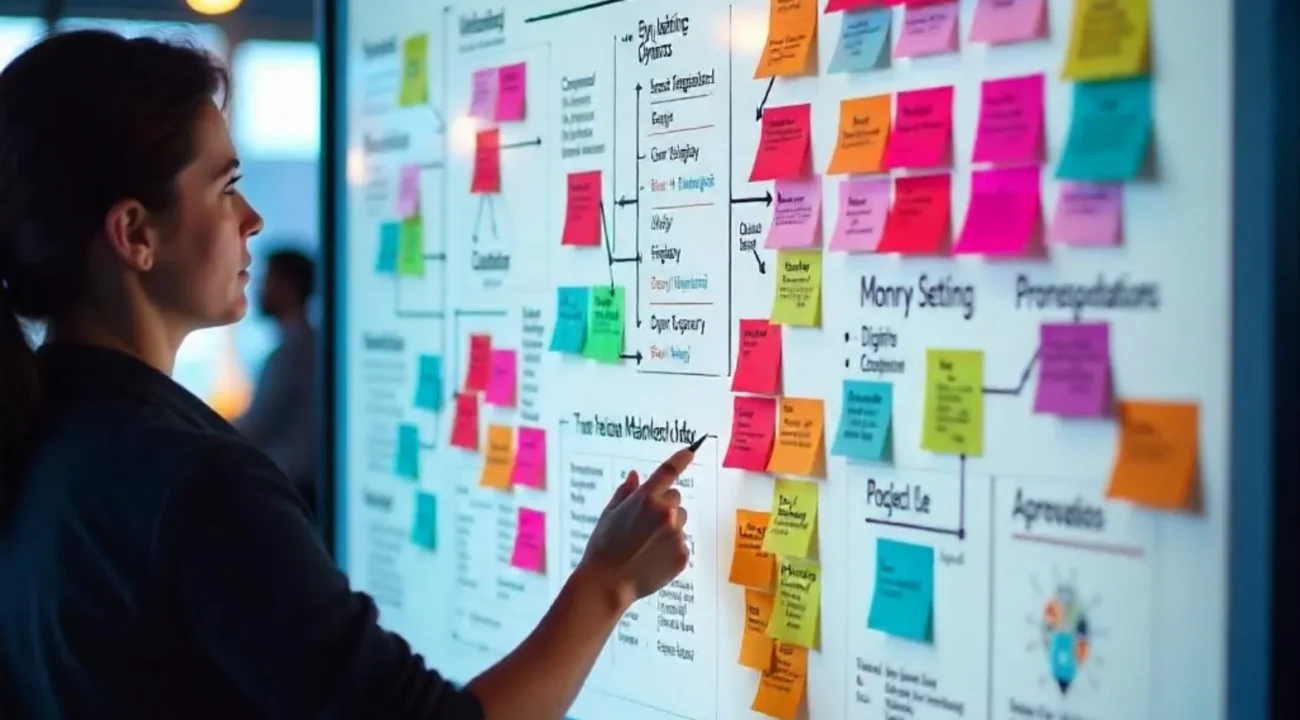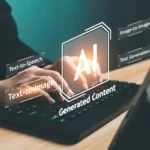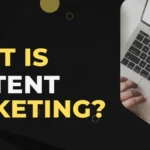In a world where digital behavior shifts by the minute, a one-platform marketing strategy no longer suffices. Modern consumers seamlessly transition between apps, websites, emails, and videos before making a decision. That’s where 360° Digital Marketing steps in—not as a tactic, but as a holistic journey.
Instead of chasing clicks, it builds experiences. Instead of isolated posts, it creates connections. This article examines what 360° marketing truly means in 2025 and how brands—from solopreneurs to startups—can effectively implement it with intention.
What Is 360° Digital Marketing?
360° digital marketing is a customer-first strategy. It ensures your brand message, design, and tone flow consistently across all digital touchpoints. Think of it as a closed loop: from first impression to conversion to retention—and back again.
It’s not about being everywhere. It’s about being everywhere that matters—with intention, clarity, and consistency.
Key Principles:
- Cohesive customer journey across platforms
- Unified messaging and design language
- Intelligent automation to scale personalization
- Actionable data guiding every decision
The Full Circle: Building the 360° System
1. Discover: Spark the Interest
Goal: Create awareness and curiosity.
Channels: Organic Social Media, SEO, YouTube, Influencer Marketing
In the discovery phase, potential customers are unaware of your brand. The objective here is simple: capture attention and generate interest.
- SEO-optimized blog content that ranks and educates
- Engaging TikToks or Reels that introduce your brand with a hook
- Collaborations with influencers in your niche
- YouTube explainers or tutorials that solve your audience’s problems
- Pinterest pins that drive traffic to long-form content or products
2. Explore: Deepen the Connection
Goal: Build trust and interest.
Channels: Website, Popups, Lead Magnets, eBooks
Once you’ve caught their attention, you must guide them to a place where they can learn more about your brand. Your website and landing pages should answer the question: “Why you?”
- Intuitive, beautiful website layout with clear messaging
- Exit-intent popups offering free value (e.g., a checklist)
- Gated content to capture high-intent leads
- Personalization based on traffic source or device type
- Case studies or explainer videos to establish credibility
3. Decide: Lead the Choice
Goal: Influence conversion through information and credibility.
Channels: Paid Media, Email Drip Campaigns, Case Studies
Here, you turn browsers into buyers by offering clarity, confidence, and a little push. Use social proof, incentives, and intelligent automation.
- Story-driven emails that highlight benefits over features
- Google & Meta retargeting ads with time-limited offers
- Success stories, testimonials, and UGC to reduce friction
- ROI calculators or product comparison charts
- Live chat or chatbot support during key decision-making moments
4. Convert: Make It Seamless
Goal: Ensure a smooth and compelling checkout experience.
Channels: Product Page, Checkout UX, Payment Systems
Conversion is where too many brands lose leads due to friction. A simple, frictionless checkout process is vital to seal the deal.
- Mobile-first design for product pages
- Social proof and reviews strategically placed
- Fewer fields at checkout and clear call-to-action
- Multiple payment options (PayPal, UPI, cards, wallets)
- Progress indicators to reduce cart abandonment
5. Retain: Create Long-Term Value
Goal: Maximize the customer’s lifetime value.
Channels: Post-Purchase Email Flow, SMS, Loyalty Programs
Retention is cheaper than acquisition—and more profitable. By delighting your customers after the purchase, you build lifetime value.
- Personalized “thank you” emails with additional tips or content
- Birthday discounts and milestone rewards
- Follow-up email asking for feedback and review
- Loyalty points programs for frequent shoppers
- Reorder reminders and subscription options
6. Amplify: Expand Your Reach
Goal: Turn loyal customers into advocates.
Channels: Reviews, UGC, Referrals, Community
After a great experience, customers are more than willing to share your brand with others—if you make it easy and rewarding for them to do so.
- Incentives for sharing and referring friends
- Featuring user photos on your homepage or feed
- Launching a brand ambassador program or micro-influencer collab
- Encourage video testimonials and story shares
- Build communities on Discord, Facebook, or WhatsApp to keep the conversation going
Recommended Tech Ecosystem
Need Tool Suggestion
SEO Research Ahrefs, SEMrush
Content Writing Jasper, Grammarly
Landing Page Builder Unbounce, Instapage
Email Marketing Klaviyo, ConvertKit
CRM & Automation HubSpot, ActiveCampaign
Ad Management Google Ads, Meta Business
Social Scheduling Metricool, Hootsuite
Heatmaps & UX Analysis Hotjar, Crazy Egg
Video Editing & Creation CapCut, Canva, Descript
2025-Proven Tips
- Build micro-funnels for different buyer personas
- Split-test landing pages and email flows regularly
- Use behavioral retargeting (not just page visits)
- Run seasonal campaigns with cross-channel alignment
- Tie content series to trending searches
- Leverage AI to personalize content suggestions and product recommendations
Mistakes to Avoid
- Ignoring platform-specific trends (e.g., TikTok voice vs. LinkedIn tone)
- Not building a clear retargeting journey
- Over-automation without relevance
- Assuming your audience is the same everywhere
- Prioritizing aesthetics over performance
- Not linking all channels to track the whole user journey
Final Thoughts: Go Beyond Strategy
360° digital marketing is more than a model. It’s a mindset—centered around your audience, driven by data, and sustained by storytelling.
The brands that win in 2025 are the ones that don’t just sell products; they sell experiences. They create value at every stage, build lasting connections, and evolve with their audience.
Start your loop. Connect the dots. Stay present—everywhere that matters.
Because in a fragmented digital world, a seamless brand experience is the only path to sustainable growth.
FAQs
Q1: Can I use 360° marketing without a big team?
Yes. Prioritize the top 3 channels where your audience lives. Automate wisely—Repurpose content. Outsource where needed.
Q2: Does 360° work for personal brands?
Absolutely. Especially for creators, coaches, and solopreneurs who want to gain visibility, authority, and conversions.
Q3: What’s the first step I should take today?
Map your customer journey across 3-5 platforms. Find the gaps. Plug them with unified messaging and smart content.
Q4: What metrics should I track?
Track Cost Per Acquisition (CPA), Lifetime Value (LTV), Click-through Rate (CTR), Retention Rate, and Email Open Rates.
Q5: How often should I update campaigns?
Monthly reviews are essential. Evaluate, test, and iterate. Seasonal pivots can be powerful if your audience’s behavior changes.
Q6: Can B2B brands use 360° digital marketing effectively?
Definitely, for B2B, long-form content, LinkedIn campaigns, case studies, and targeted email funnels play a vital role.
Q7: What’s the role of AI in a 360° approach?
AI helps personalize communication, automate content delivery, segment audiences more intelligently, and analyze performance data faster.



